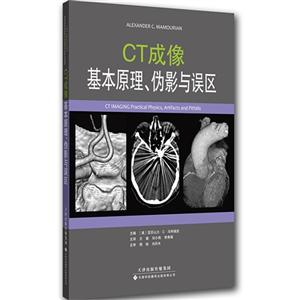
作者:BobZhang,QijunZha
页数:206
出版社:高等教育出版社
出版日期:2017
ISBN:9787040494471
电子书格式:pdf/epub/txt
内容简介
人脸具有多特征的属性,是人类表达和交流的最重要、最直接的载体。通过人脸可以判断出一个人的美丑,甚至身份等信息;人们还能通过人脸丰富而复杂细小的变化,得到对方的情绪状态,以及相关的病理信息。本书探讨具有四种不同的人脸主要特征及其相应的应用,即固有个体特征的人脸识别,固有群体特征的美学分析,疾病导致变化特征的医学诊断,以及外界刺激形成变化特征的表情鉴别。对于这些不同的人脸特征及应用,本书重点介绍包括获取数据样本、提取表述特征和匹配决策判断等内容,并在大量训练的数据库上分别验证其研究的有效性。 本书研究基础扎实,内容翔实、严谨。可作为面部特征识别领域研究人员的专业用书,也可供计算机图像识别、生物识别等专业研究生参考使用。
本书特色
人脸多样化特征及其应用(英文版)Facial Multi-Characteristics and Applications
目录
Chapter 1 Introduction
1.1 Why Faces with Multi-Characteristics
1.2 Facial Authentication Using Permanent Special Features
1.3 Facial Beauty Analysis Using Permanent Common Features
1.4 Facial Diagnosis by Disease Changed Features
1.5 Expression Recognition by Stimulus Changed Features
1.6 Outline of This Book
References
PART I FACIAL AUTHENTICATION
Chapter 2 Facial Authentication Overview
2.1 Introduction
2.1.1 History of Automated Facial Recognition Research
2.1.2 Classification of Facial Recognition Scenarios
2.1.3 Challenges in Automated Facial Recognition
2.2 Permanent Unique Features for Facial Recognition
2.2.1 Geometric Features
2.2.2 Appearance Features
2.3 Facial Recognition: Systems and Applications
2.3.1 Major Modules in Automated Facial Recognition Systems
2.3.2 Application Modes
2.4 Chapters Overview
2.5 Summary
References
Chapter 3 Evolutionary Discriminant Feature Based Facial Recognition
3.1 Introduction
3.2 Evolutionary Discriminant Feature Extraction
3.2.1 Data Preprocessing: Centralization and Whitening
3.2.2 Calculating the Constrained Search Space
3.2.3 Searching: An Evolutionary Approach
3.2.4 Bagging EDFE
3.3 Facial Recognition Experiments
3.3.1 Databases and Parameter Settings
3.3.2 Investigation on Different Subspaces
3.3.3 Investigation on Dimensionality of Feature Subspaces
3.3.4 Performance Comparison
3.3.5 Discussion
3.4 Summary
References
Chapter 4 Facial Identification by Gabor Feature Based Robust Representation
4.1 Introduction
4.2 Related Work
4.2.1 Sparse Representation Based Classification(SRC)
4.2.2 Collaborative Representation Based Classification(CRC)
4.2.3 Gabor Features
4.3 Gabor-Feature Based Robust Representation and Classification
4.3.1 Gabor-Feature Based Robust Representation
4.3.2 Discussion on Occlusion Dictionary
4.3.3 Gabor Occlusion Dictionary(GOD)Computing
4.3.4 GRR Based Classification(GRRC)
4.3.5 Time Complexity
4.4 Experimental Results
4.4.1 Gabor Features and Regularization of GOD Computing
4.4.2 Face Recognition with Little Deformation
4.4.3 Face Recognition with Pose and Expression Variations
4.4.4 Recognition Against Occlusion
4.5 Discussion of Regularization on Coding Coefficients
4.6 Summary
References
Chapter 5 Three Dimension Enhanced Facial Identification
5.1 Introduction
5.2 Joint Face Alignment and 3D Face Reconstruction
5.2.1 Overview
5.2.2 Training Data Preparation
5.2.3 Learning Landmark Regressors
5.2.4 Estimating 3D-to-2D Mapping and Landmark Visibility
5.3 Application to Face Recognition
5.4 Experiments
5.4.1 Protocols
5.4.2 3D Face Reconstruction Accuracy
5.4.3 Face Alignment Accuracy
5.4.4 Face Recognition Accuracy
5.4.5 Computational Efficiency
5.5 Summary
References
PART II FACIAL BEAUTY ANALYSIS
PART III FACIAL DIAGNOSIS
PART IV FACIAL EXPRESSION RECOGNITION
Index
1.1 Why Faces with Multi-Characteristics
1.2 Facial Authentication Using Permanent Special Features
1.3 Facial Beauty Analysis Using Permanent Common Features
1.4 Facial Diagnosis by Disease Changed Features
1.5 Expression Recognition by Stimulus Changed Features
1.6 Outline of This Book
References
PART I FACIAL AUTHENTICATION
Chapter 2 Facial Authentication Overview
2.1 Introduction
2.1.1 History of Automated Facial Recognition Research
2.1.2 Classification of Facial Recognition Scenarios
2.1.3 Challenges in Automated Facial Recognition
2.2 Permanent Unique Features for Facial Recognition
2.2.1 Geometric Features
2.2.2 Appearance Features
2.3 Facial Recognition: Systems and Applications
2.3.1 Major Modules in Automated Facial Recognition Systems
2.3.2 Application Modes
2.4 Chapters Overview
2.5 Summary
References
Chapter 3 Evolutionary Discriminant Feature Based Facial Recognition
3.1 Introduction
3.2 Evolutionary Discriminant Feature Extraction
3.2.1 Data Preprocessing: Centralization and Whitening
3.2.2 Calculating the Constrained Search Space
3.2.3 Searching: An Evolutionary Approach
3.2.4 Bagging EDFE
3.3 Facial Recognition Experiments
3.3.1 Databases and Parameter Settings
3.3.2 Investigation on Different Subspaces
3.3.3 Investigation on Dimensionality of Feature Subspaces
3.3.4 Performance Comparison
3.3.5 Discussion
3.4 Summary
References
Chapter 4 Facial Identification by Gabor Feature Based Robust Representation
4.1 Introduction
4.2 Related Work
4.2.1 Sparse Representation Based Classification(SRC)
4.2.2 Collaborative Representation Based Classification(CRC)
4.2.3 Gabor Features
4.3 Gabor-Feature Based Robust Representation and Classification
4.3.1 Gabor-Feature Based Robust Representation
4.3.2 Discussion on Occlusion Dictionary
4.3.3 Gabor Occlusion Dictionary(GOD)Computing
4.3.4 GRR Based Classification(GRRC)
4.3.5 Time Complexity
4.4 Experimental Results
4.4.1 Gabor Features and Regularization of GOD Computing
4.4.2 Face Recognition with Little Deformation
4.4.3 Face Recognition with Pose and Expression Variations
4.4.4 Recognition Against Occlusion
4.5 Discussion of Regularization on Coding Coefficients
4.6 Summary
References
Chapter 5 Three Dimension Enhanced Facial Identification
5.1 Introduction
5.2 Joint Face Alignment and 3D Face Reconstruction
5.2.1 Overview
5.2.2 Training Data Preparation
5.2.3 Learning Landmark Regressors
5.2.4 Estimating 3D-to-2D Mapping and Landmark Visibility
5.3 Application to Face Recognition
5.4 Experiments
5.4.1 Protocols
5.4.2 3D Face Reconstruction Accuracy
5.4.3 Face Alignment Accuracy
5.4.4 Face Recognition Accuracy
5.4.5 Computational Efficiency
5.5 Summary
References
PART II FACIAL BEAUTY ANALYSIS
PART III FACIAL DIAGNOSIS
PART IV FACIAL EXPRESSION RECOGNITION
Index














